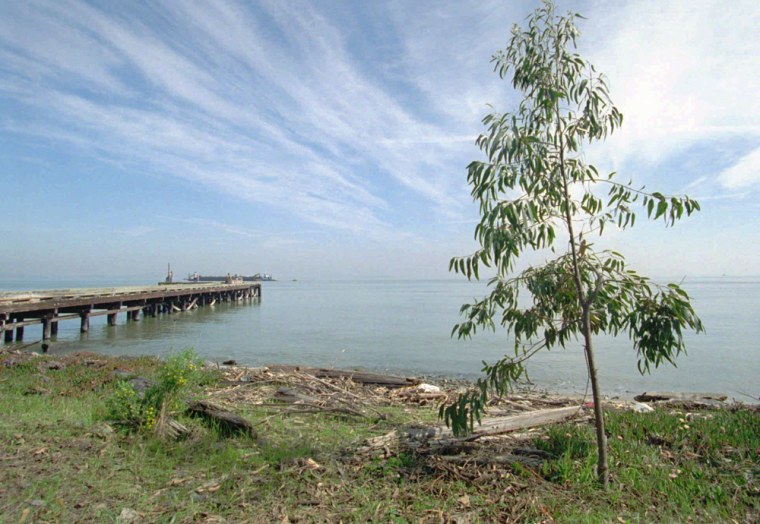A California state park since 1958, Angel Island is several times larger -- and far more picturesque -- than its stony, forbidding sister, Alcatraz, site of the infamous penitentiary abandoned since 1963.
Six thousand years ago, Miwok Indians hunted here. By the 1800s, Angel Island was serving as a military base, a role it played in mobilizations from the Civil War through the Cold War. It also functioned as the Ellis Island of the West, where tens of thousands of mainly Asian immigrants were detained before being admitted to the United States or deported.
The island, says Skip Henderson, executive director of the Angel Island Association (a local nonprofit organization) "encapsulates the entire history of the Bay Area."
Most visitors arriving at Ayala Cove by ferry from San Francisco, Marin County or Oakland are Bay Area residents -- children on field trips, history buffs, sun worshipers in search of secluded beaches, hikers seeking panoramic views of the bay. Some of the day-trippers hop aboard a tram for a 45-minute, five-mile ride around the island on Perimeter Road, then board a ferry back across Raccoon Strait to the charming Marin County town of Tiburon.
The island, however, merits taking it slow -- on foot or bicycle -- from the ferry dock, where amenities include a cafe and visitors center. Most visitors head to the island's western side, attracted in part by Camp Reynolds, where they can tour the Civil War outpost's restored wooden barracks.
Then there's the view. Sausalito, an artists' enclave and marina, lies to the west across a mile or two of choppy water. Farther west, the headlands of Marin County plunge into the Pacific; here, from land's end, the Golden Gate Bridge crosses to the northernmost tip of San Francisco.
As one continues counterclockwise on Perimeter Road, the northern half of San Francisco appears -- Fisherman's Wharf, North Beach, the Transamerica Pyramid, Russian Hill.
The southern face of the island, past Perles and Sand Springs beaches, looks out on the Bay Bridge, with one end in Oakland. The university town of Berkeley, its bell tower visible for miles, lies to the north. And for anyone willing to make the trek to the top of Mount Livermore, a fairly easy two-hour hike, the reward is a panoramic view of the bay.
Given the island's strategic position near the mouth of the bay it assumed significance as a military outpost. The first major stronghold, Camp Reynolds, was completed in 1864 as a defense against a naval raid by Confederate forces, a threat that never materialized.
Angel Island then served as a staging area for soldiers shipping out to, or returning from, military campaigns, including the Spanish-American War of 1898 and both world wars. During World War II, more than 300,000 troops passed through Fort McDowell. Its abandoned buildings, dating from the 1890s, still stand. In the 1950s, as the cold war intensified, Angel Island became the site of a Nike missile battery, subsequently dismantled in 1962.
But the island's most intriguing history took place at the immigration station on the island's northeast shoulder. Dale Ching, today a resident of the Bay Area town of Daly City, was 16 when he arrived at the immigration center from the Chinese village of Cheung Shen in 1937.
"I was there three months," he tells Smithsonian magazine. "I did nothing each day -- just hoped tomorrow would be my day to get away from Angel Island."
Some 175,000 Chinese nationals were processed in the facility between 1910 and 1940, when it was shut down.
In 1991, Ching, then 70, returned to Angel Island. His teenage grandchildren had asked that he show it to them. "I didn't have the heart to turn them down," Ching says.
In the end, he made peace with the past, signing on as a volunteer at the Immigration Station Barracks Museum, which is now undergoing an ambitious $15 million renovation. In 1997, the station became one of only two Asian-American historic sites registered as national historic landmarks.
